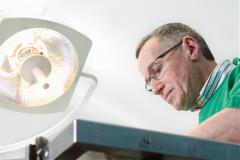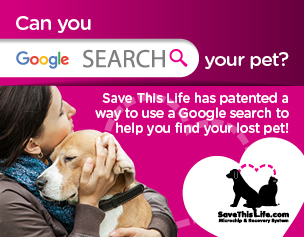Proper Lighting Is Important In a Practice

Just as in any medical facility, lighting is a key element to consider when setting up a veterinary practice. From that very first moment when a client enters the doorway, there should be an atmosphere of safety and professionalism. The ways that lighting is used can help to promote that impression.
Entrance Area
Doorways should be properly light, not only to watch for cleanliness, but also to make sure that clients don’t trip over welcome mats or rugs that may have been placed down to catch mud and water.
Reception and Waiting Areas
There are probably no other rooms within the practice that will need to be cleaned up more often than the waiting and reception areas. Good lighting in these areas is also essential to help with safety:
- Especially in times of rain, sleet, or snow, the constant foot traffic from clients and their animals can make the floor slippery and wet, and these areas can be a nightmare for staff to keep mopped and dry. Proper lighting is essential to highlight the wet areas within the rooms so clients avoid slipping.
- Being able to see other kinds of dirt that has been tracked in is imperative to keeping everyone healthy and the facility clean.
- Proper lighting is necessary to be able to thoroughly clean up after a sick pet, so that no other animals can come into contact with any germs, parasites, or body fluids.
- Pet bathroom accidents happen; without proper lighting someone may not notice the mess and could end up slipping and falling.
- Proper lighting enables clients to look around, check out the retail area, and read informational pamphlets and bulletin boards.
Examination Room
Conducting an exam of an animal requires a visual assessment. No matter who is completing the checkup, the exam room needs to have proper lighting available.
- When determining the general appearance and body condition of an animal, improper lighting could cast shadows on areas that may mask indicators of health concerns such as:
- Bruising
- Pale gums
- Signs of parasites
- Skin issues.
- Proper lighting allows veterinarians to feel more confident that injuries will be quickly located so the proper steps can be started for diagnosis and treatment.
- Once an examination is complete, it is always imperative to disinfect the exam area. Good lighting will ensure that the staff responsible for cleaning the room will be able to see and can, therefore, thoroughly clean any areas that the previous patient may have touched.
Operating and Emergency Rooms
These two rooms require a well-lit environment, and typically have overhead surgical lights that can be repositioned to cast light in specific areas as needed. Without this type of lighting it would be difficult to perform the procedures with confidence. Performing a procedure on an injured or sick pet can be stressful enough, so having the type of lighting that ensures that the tiniest of details are taken care of is imperative.
Laboratory
Oftentimes the work that goes on within the lab requires lighting that is sufficient to complete the gathering of information from tests on animals such as:
- Blood counts
- Urinalysis
- Parasite check
Proper lighting helps to:
- Properly process test results and document information
- Ensure equipment that processes test results can be carefully calibrated and maintained in order to safeguard against false results and breakage
- Allow careful completion of tests that require proper utilization of equipment to safeguard against false results and breakage
Kennel
The kennel area that provides care for sick animals needs lighting that is sufficient for staff to check on and care for the animals, but not so bright that it is not tolerated well by the pets.
Remember to Keep Areas Cool
Lighting needs within a veterinary practice can vary from room to room, depending on the room’s use. A planning point to consider is that lights put out heat. In areas where strong lighting is required, a problem can arise if the lighting generates too much heat. The need for additional ways to cool the area may be required.
Much of the workings of a veterinary practice depend on proper lighting. For example, lighting offers the ability to thoroughly examine a patient, complete tests, and ensure that diseases aren’t passed on to another pet. Properly lighting all areas of the veterinary practice will also help keep clients, their pets, and the staff free and clear of any mishaps.
Connect with your Covetrus representative at 855.724.3461 to learn more about what we can offer your practice!


Working Here
Our team members are encouraged to be the best they can be... at Covetrus we believe we impact one another.
Learn MoreNews & Events
FDA Cautions Pet Owners Not to Feed Texas Tripe Inc. Raw Pet Food Due to Salmonella, Listeria Monocytogenes
The U.S. Food and Drug Administration is cautioning pet owners not to feed their pets any of the Texas Tripe brand raw frozen pet food listed below because several samples of Texas Tripe raw pet food have tested positive for Salmonella and/or L. mono.
Careers
Are you looking for a place to let your talents shine? At Covetrus, we help our practitioner customers better serve their patients and take pride in providing the best customer experience possible. Search our open positions to see our available opportunities.
Newsletter
Stay current with what’s going on with Covetrus, subscribe to receive our newsletter and email communications. Subscribers will receive the latest information in practice management, sales and marketing, animal health, and more.



-3-(1).png?sfvrsn=2d806d73_0)

Leave a comment